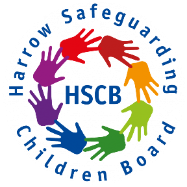E-Safety – Guidance
Online safety resources
For Safer Internet Day 2018, the UK Safer Internet Centre has educational resources, aimed at schools, youth groups and others settings. The resources are tailored for: 3-7 year olds; 7-11 year olds; and 11-14 year olds and are accompanied by a short film. Further information:
Educational resources for 3-7 year olds
Educational resources 7-11 year olds
Educational resources for 11-14 year olds
Heres the latest news from CEOP supporting schools with online safety.
The Thinkuknow Toolkit
We’ve released the Thinkuknow Toolkit, a new downloadable set of lesson plans for education practitioners to use with young people aged 11+ ; https://www.thinkuknow.co.uk/Teachers/
Has your school signed up to ParentInfo?
ParentInfo is a free service for schools which provides expert, up-to-date content for parents and carers which schools can host on their own websites.
The content is written by leading authorities on a wide range of topics including online safety, sex and relationships, health and wellbeing and family life. Each article aims to help parents develop their children’s resilience against the risks they may face online or off.
ParentInfo is a new tool for schools to engage with parents on a broad range of topics. Schools have complete control over the articles they present on their website, with the ability to choose articles relevant to their specific needs. It is also a great opportunity to reach parents and carers with more complex PSHE content, written by experts in their fields.
Hundreds of schools across the country have already registered and are using the service on their website. If your school is yet to register, please visit www.parentinfo.org.
Do the children and young people you work with watch vlogs or vlog themselves?
Vlogging has become increasingly popular amongst young people with young YouTubers finding fame and fortune.
Teen vlogger, Zoella (www.thinkuknow.co.uk/14_plus/News/Got-a-great-idea-for-an-online-career-Jamal-and-Zoe-did/) reaches huge audiences through her fashion-focused video blogs on YouTube. Many young people are inspired by Zoella’s success and look to follow in her (or one of the many other YouTubers) footsteps. This can be great fun and is an exciting opportunity for young people to get creative online.
It’s important, however, that young people are reminded that online sharing can sometimes get out of hand. Why not use our interactive film ‘First2amillion’ to explore this with the young people you work with? The story follows a brother and sister who compete against each other to be the first to receive a million views of their films on YouTube. As the stakes are raised, so are the risks. You can watch the film here, or download the full resource.
The impact of technology on the sexual abuse and exploitation of children and young people.
Download Digital Dangers Report
Barnardo’s and the Marie Collins Foundation have published a report examining the impact of technology on the sexual abuse and exploitation of young people. Findings include: the internet has given perpetrators greater access to potential victims. Young people believe that due to anonymity they are protected online and therefore take more risks and are less inhibited. All children are at risk of online harm, even those without any vulnerabilities commonly associated with the risk of sexual exploitation such as being in care.
Further information:
Digital dangers: the impact of technology on the sexual abuse and exploitation of children and young people (PDF)
Thinking about ˜sexting?
You may have been tempted in the past to send naked pictures or videos of yourself, perhaps to a friends mobile, on a web cam, or on social media.
Some people call this sexting, cybersex or sending a nudie. This makes it sound exciting and fun. It can feel really private too.
But sexting is never private. All images can be saved or ˜screengrabbed by the person receiving it even if you think you are using a private network or a temporary message app like Snapchat.
Once a photo is shared online, you have lost all control of it and it will be virtually impossible for you undo. Even if you change your mind and delete the photo you uploaded, other people may have already shared or copied the image. This puts you at risk of abuse or exploitation by others.
Find out more from this great website; http://www.itsnotokay.co.uk/what-is-it/online-safety-and-sexting/
Sexting in schools and colleges: Responding to incidents and safeguarding young people
This advice has been produced on behalf of the UK Council for Child Internet Safety (UKCCIS) a group of more than 200 organisations from across government, industry, law, academia and charity sectors, working in partnership to help keep children safe online.
This advice is for designated safeguarding leads (DSLs), their deputies, headteachers and senior leadership teams in schools and educational establishments1 in England
Further information: Sexting in schools and colleges: responding to incidents and safeguarding young people (PDF)
NSPCC new research into Online sexual abuse
The NSPCC have published two new reports into online sexual abuse.
The first report, NSPCC helplines: responding to adults and childrens concerns about sexual abuse online, has revealed an increase in the number of contacts to Childline, the O2 & NSPCC Online Safety Helpline, and the NSPCC Helpline about online sexual abuse.
The second report, A review of the research on children who display harmful sexual behaviour online, is a literature review which addresses what is online HSB and how it compares to HSB offline.

